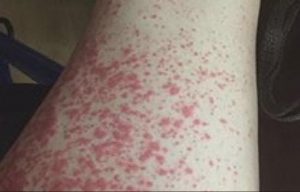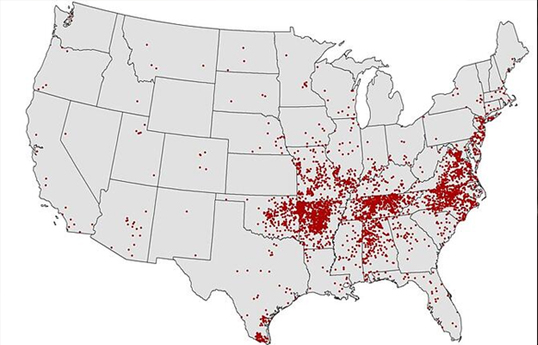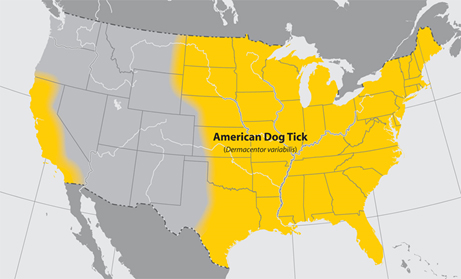Rocky Mountain Spotted Fever (RMSF)
 Rocky Mountain spotted fever (RMSF) is a potentially deadly tick-borne illnesses found in the United States. Rickettsia rickettsii is the bacteria transmitted through by the bite of an infected tick. Types of ticks that can transmit RMSF are Rocky Mountain wood tick, brown dog tick and the American dog tick (which we have here in abundance on the east coast). An R. rickettsii bacterium damages the linings of the smallest blood vessels in the body and can cause them to form clots. As a result, RMSF can affect many systems in the body, such as respiratory, neurological, and digestive. Heart and kidney damage can ensue if the disease is left untreated.
Rocky Mountain spotted fever (RMSF) is a potentially deadly tick-borne illnesses found in the United States. Rickettsia rickettsii is the bacteria transmitted through by the bite of an infected tick. Types of ticks that can transmit RMSF are Rocky Mountain wood tick, brown dog tick and the American dog tick (which we have here in abundance on the east coast). An R. rickettsii bacterium damages the linings of the smallest blood vessels in the body and can cause them to form clots. As a result, RMSF can affect many systems in the body, such as respiratory, neurological, and digestive. Heart and kidney damage can ensue if the disease is left untreated.
Like so many other vector-borne illnesses, Rocky Mountain spotted fever signs and symptoms can mimic those of the flu or other sicknesses. Early symptoms may include fever, chills, headache, nausea, vomiting, stomach pain, muscle pain, loss of appetite, and rash. If left untreated, the disease can cause shortness of breath, rapid breathing, jaundice, severe abdominal pain, confusion, difficulty walking, seizures, coma, and in some cases, death.
A rash can occur after a week from the date of the initial tick bite. How the rash looks can be valuable in the diagnosis of RMSF as it is very different from others (such as the bull’s eye tick bite due to Lyme disease). The distinct rash usually starts with pink/red small non-itchy spots on the wrists and ankles and gradually spreads from those areas. The spots of the rash might seem like they have a redder pinpointed center due to the contained bleeding under the skin.
Sever cases of Rocky Mountain Fever can lead to lung failure, kidney failure, significant bleeding, and even brain damage. Therefore it is essential to see a doctor if you develop a rash or start to feel sick after a tick bite. Your healthcare provider will order blood tests and other lab work to help with the diagnosis of RMSF. The results of these tests can take weeks, so doctors start patients on antibiotics to combat the infection immediately.

Source: CDC – Cases Reported to CDC of Rocky Mountain Spotted Fever (U.S. in 2014)

Source: CDC – American Dog Tick’s Habitat in the U.S.
